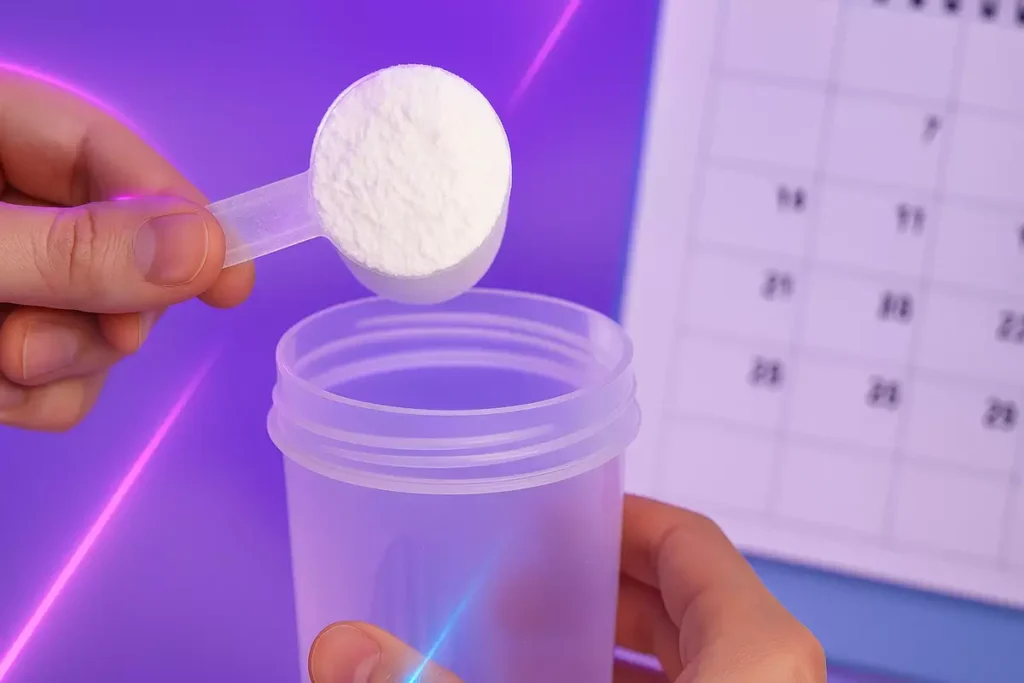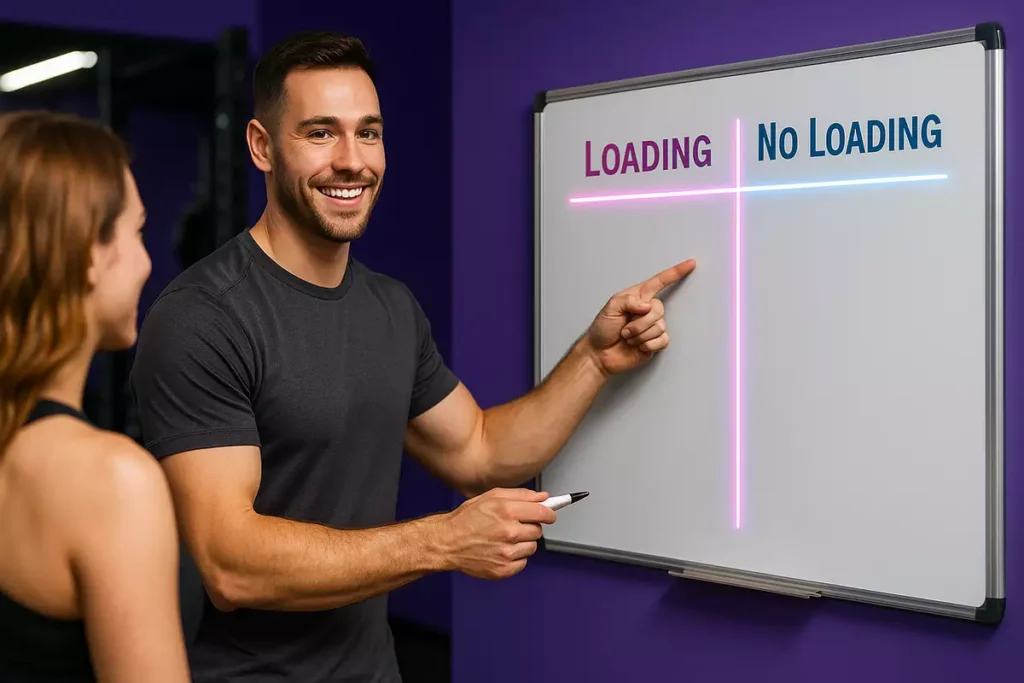Creatine monohydrate is one of the most researched and effective supplements for strength, muscle growth, and endurance.
But when starting out, you face a common question — should you load creatine for faster results, or take it daily without loading?
The answer can impact how quickly you see gains, recover faster, and feel more explosive in your workouts.
Let’s break down loading vs. no loading creatine, backed by science, real-life experience, and proven results in the gym.
Table of contents
Does Loading Creatine Work Better?
If you want fast results, a creatine loading phase will get your muscles saturated within about a week.
This gives you a quick boost in strength and endurance.
If you prefer a gentler approach, taking a steady daily dose without loading will give you the same benefits — it just takes about 3–4 weeks.
Both methods work; the difference is speed, not effectiveness.
You can read more about daily creatine usage in my Daily Creatine Monohydrate Use Guide.
What Creatine Loading Means

The classic creatine loading phase involves taking around 20g of creatine monohydrate per day, split into 4–5 doses, for 5–7 days.
After that, you drop down to a maintenance dose of about 5g per day.
This approach fills your muscles with creatine quickly, helping you notice performance improvements in days instead of weeks.
I’ve personally done this during a bulking phase, taking 5g with each meal.
Within six days, I saw my bench press go from 100 kg to 105 kg — and my recovery between sets felt smoother.
One of my clients, Marcus from Sweden, told me he felt “more explosive” on heavy squats after just five days of loading.
For more on how creatine can impact athletic performance, check out my article on Creatine for Runners and Endurance Athletes.
No Loading Method Explained
With the no-loading method, you skip the big doses and simply take 5g daily from day one.
This lets creatine levels build up gradually in your muscles, typically taking 3–4 weeks to fully saturate.
When I used this method, the changes came slower.
But by week four, my lifts and muscle fullness matched what I’d get from loading.
Daniel, a client from Australia, prefers this approach because he avoids stomach discomfort and water bloat while still getting the same long-term results.
If you want to know what happens when you stop taking creatine, you can read my guide here: Stop Taking Creatine – What Happens?.
Results Comparison: Loading vs. No Loading

Loading phase results: noticeable strength and endurance gains in under a week, fuller muscle appearance, and faster recovery between sets.
No loading results: same strength and muscle fullness, but benefits appear after about a month.
From my experience, loading is ideal if you have a competition, testing week, or big event coming soon.
No loading works perfectly if you’re playing the long game and don’t mind waiting.
For a deeper look at how creatine compares to other supplements like BCAAs, see my article BCAA vs. Creatine for Strength and Size.
Pros and Cons of Each Approach
Method | Pros | Cons |
|---|---|---|
Loading | Fast results, quick strength boost | Possible stomach discomfort, water bloat |
No Loading | Easier on digestion, steady adaptation | Takes longer to see results |
During loading, I sometimes felt mild stomach discomfort if I took too much at once.
Javier from Spain also reported slight bloating during his first week.
With no loading, I’ve never had side effects — and neither have most of my clients.
You can also learn how creatine may interact with hormones in my Creatine Monohydrate and Testosterone Guide.
Which Method Is Best for You?

If you want quick improvements, go for loading.
If you prefer a gradual, side-effect-free approach, skip the loading phase.
For beginners, I almost always recommend no loading.
It’s less overwhelming, and they can focus on consistent training without distraction.
Advanced lifters or competitive athletes sometimes benefit from a short loading phase before a big training block.
Emma, a figure competitor from the UK, used a five-day loading phase before her heaviest workouts and said it gave her “an extra gear” in training.
You might also find my article helpful on whether to take Creatine With a Protein Shake or Separately.
Final Takeaway – Key Points to Remember
- Both methods work — the main difference is speed.
- Loading saturates your muscles in about a week; no loading takes 3–4 weeks.
- Your choice depends on your goals, timeline, and digestive comfort.
From years of training and coaching, my advice is simple: if you’re in no rush, 5g daily is all you need.
If you have a deadline, a short loading phase can be a game-changer.
Either way, creatine monohydrate remains one of the most proven, effective supplements you can add to your fitness routine.
And for those wondering about regulations, check my article on Creatine Monohydrate in Banned Sports.



Leave a Reply